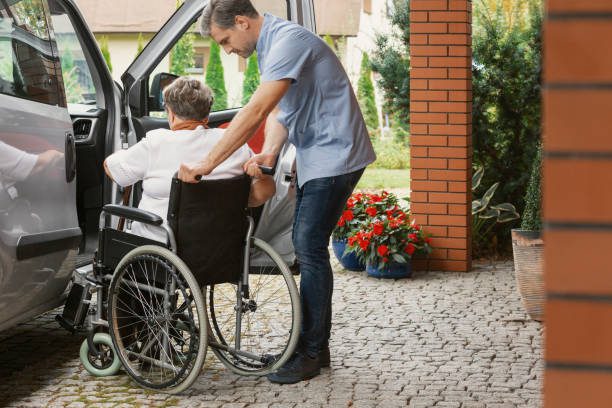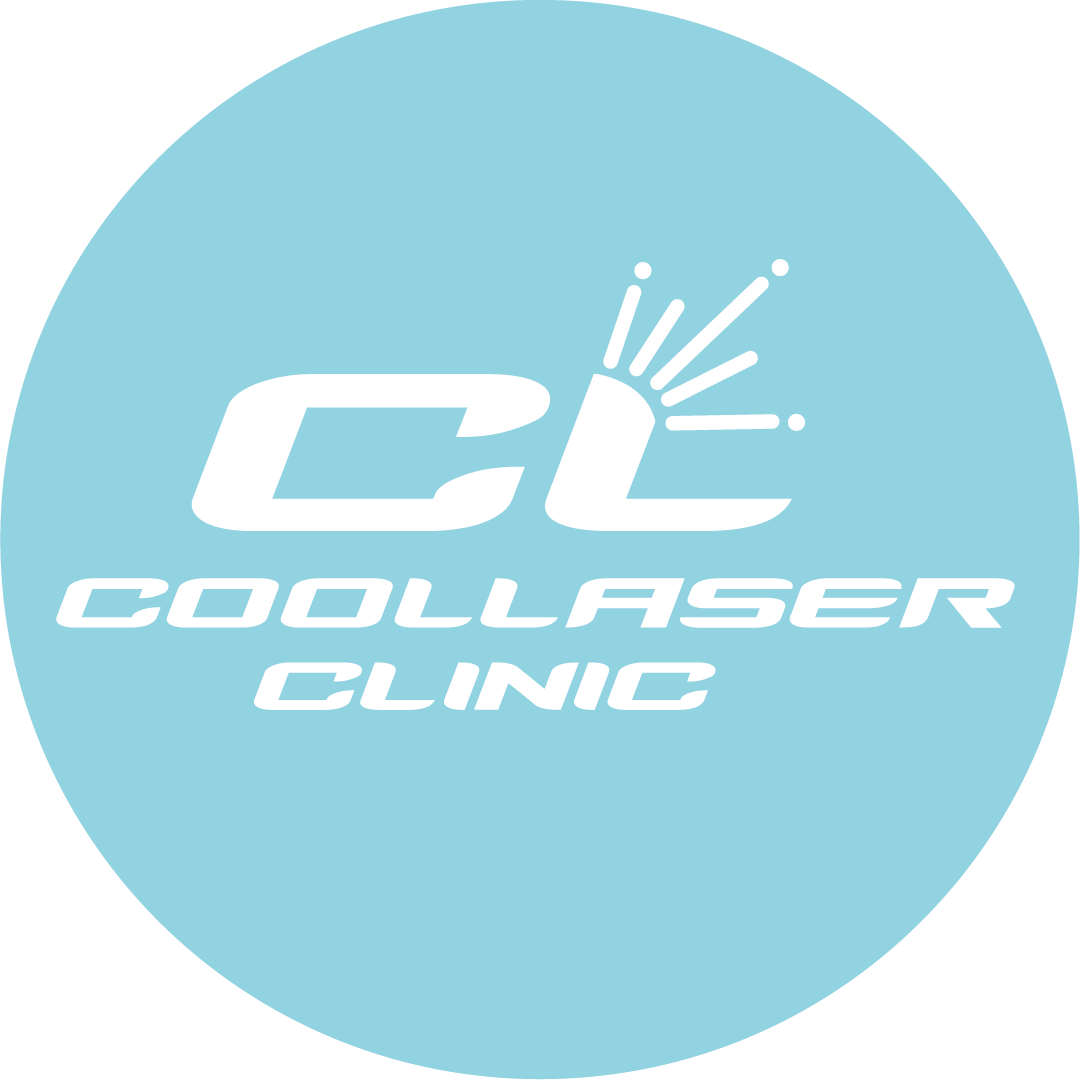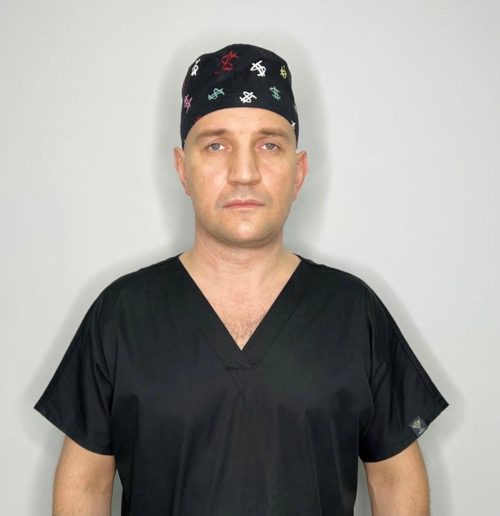A detailed guide: how to treat Parkinson’s disease
Many people wonder how to treat Parkinson’s Disease, what is it and what can be the consequences? Parkinson’s disease is a chronic neurodegenerative disease that affects the central nervous system of a person. It is most often diagnosed in older people, but it can also start at a young age. The main characteristics of Parkinson’s disease are degeneration of dopamine neurons and accumulation of alpha-synuclein protein in the brain. These changes lead to impaired motor function and other symptoms, which we will discuss in detail later.

- A detailed guide: how to treat Parkinson’s disease
- Are Parkinson’s Disease and Parkinson’s Syndrome the same thing?
- Parkinson’s Disease Symptoms.
- Main signs of Parkinson’s disease when the clinical picture has already developed
- Diagnosis of Parkinson’s disease
- Parkinson’s disease: stages
- Causes of Parkinson’s disease:
- How to treat Parkinson’s disease with pharmacy remedies
- How to treat Parkinson’s disease with folk methods
- How to treat Parkinson’s disease with stem cells in Kiev
- Contraindications in Parkinson’s disease
- FAQ Frequently Asked Questions
Parkinson’s disease is (in simple words)
Let’s try to explain Parkinson’s disease in simple terms. It is a disease associated with problems in the brain that affect the ability to control one’s movements. Patients with Parkinson’s Disease (PD) may experience tremors, difficulty walking and other movement problems.
This disease greatly affects the patient’s life, but with treatment and support, quality of life can be improved.
The name “Parkinson’s disease” comes from the surname of physician James Parkinson, who first described the disease in detail in his work published in 1817. Parkinson was one of the first to conduct an extensive clinical study of the symptoms and characteristics of this disorder, and his name has remained associated with the disease.

There are several terms for this condition. Here are some of them:
- Parkinson’s disease
- Parkinson’s syndrome
- Parkinsonism
Are Parkinson’s Disease and Parkinson’s Syndrome the same thing?
Yes, “Parkinson’s Disease” and “Parkinson’s Syndrome” refer to the same medical condition.
Term Difference Table:
| Name | Description. |
| The term “Parkinson’s disease” | is commonly used to describe a neurodegenerative disease that is characterized by certain symptoms such as tremors, muscle rigidity, coordination problems, and other motor and non-motor symptoms. |
| The term “Parkinson’s syndrome” | also describes the same symptoms and condition, but can be used more broadly to account for cases where symptoms may be caused by other factors, such as medications or other medical conditions. |
It should be noted that in most cases these terms are interchangeable and both indicate the same disease.
Parkinson’s Disease Symptoms.
Parkinson’s symptoms can include both motor and non-motor manifestations. Motor symptoms include:
- Resting tremor is one of the most characteristic symptoms. Various exercise and rehabilitation techniques can be used to alleviate tremor.
- Muscle stiffness – Physical therapy, massage and relaxation techniques can help relieve muscle tension and stiffness.
- Slow movement – Physical activity and regular exercise help maintain mobility and improve coordination of movements.
- Balance Problems – Physical therapy classes and rehabilitation focus on strengthening muscles and maintaining balance.

Non-motor symptoms may include:
- Depression and other psychological problems.
- Sleep disorders, including insomnia and somnolence.
- Digestive and urinary problems.
- Loss of sense of smell and impaired vision.
Main signs of Parkinson’s disease when the clinical picture has already developed
The clinical picture may include a variety of symptoms, both motor and non-motor.
Motor symptoms:
- Tremors (tremor): One of the most characteristic symptoms of PD is tremors in the limbs, most commonly starting in one of the arms. The tremor may be visible at rest and may intensify when attempting to perform any movement.
- Muscle stiffness (stiffness): Muscles become tighter and stiff, which can cause discomfort and make movement difficult.
- Slow movements (bradykinesia): Patients with Parkinson’s disease often experience slow and clumsy movements. Simple everyday activities such as dressing or eating may become difficult.
- Postural Instability: Patients often experience balance and coordination problems, which can lead to difficulty walking and falls.
Non-motor symptoms:
- Psychological symptoms: The disease can cause depression, anxiety, psychosis, and problems with concentration and memory.
- Sleep and dream disturbances: Patients often experience insomnia, excessive daytime sleepiness, and dream disturbances.
- Speech and swallowing problems: Deterioration of speech and difficulty swallowing may be among the first non-motor symptoms.
- Decreased sense of smell: Many patients with Parkinson’s disease have an impaired sense of smell, which can affect appetite and the ability to recognize odors.
- Urinary problems and constipation: Uncontrolled urination and problems with bowel tone may be inherent in the disease.
- Loss of sexual function: Many patients may have problems with loss of interest in sexual activity and erectile dysfunction.
- Decrease in overall physical activity: Patients may experience a decrease in physical activity due to symptoms of illness and fear of falls.
Diagnosis of Parkinson’s disease
Diagnosing Parkinson’s disease can be challenging because its symptoms can be similar to other neurologic diseases. A neurology physician performs a comprehensive evaluation of the patient, including a clinical examination, history, movement coordination tests, and tests for response to medications. An MRI or CT scan of the brain to detect changes in neural tissue also plays an important role in the diagnosis.
How to check if you have Parkinson’s disease.
In order to determine if you have signs of Parkinsonism, it is important to pay attention to the first symptoms. If you experience tremors, muscle stiffness, slowed movements, or other unusual changes in motor function, you should see your doctor immediately. Diagnosing the disease early allows you to begin treatment and symptom management early, which can improve your prognosis.

Parkinson’s disease: stages
Parkinson’s disease goes through several stages, each characterized by specific symptoms and progression of the disease.
In the initial stages, patients may experience mild tremors and muscle stiffness, but are still able to perform everyday tasks. As they progress to more advanced stages, symptoms become more severe and there may be difficulty with walking and general mobility.
Several classifications have been developed to understand and evaluate Parkinson’s disease patients in more detail.
Categorization by degree of limitation of daily activity
- Initial stage – characterized by minimal manifestations of the disease. Patients in this stage can continue their occupational activities without the need to change their work regimen. In most cases, no drug treatment is required.
- Middle stage – patients begin taking Levodopa as activity during the day begins to decrease and symptoms become more severe.
- Late stage – at this stage, there is severe impairment of function and loss of self-care. Treatment may be complicated by side effects of antiparkinsonian medications.
Henu-Yaru system classification
- Primary stage – Parkinson’s disease affects only one side of the body.
- Secondary stage – body dysfunctions are noted on both sides of the body.
- Tertiary stage – at this stage, coordination problems are evident and gait becomes unsteady, but patients are still able to move independently.
- Quaternary stage -motor activity is severely restricted and patients require assistance to move around.
- Stage 5 -patients are in bed or wheelchair, having completely lost the ability to move independently.

How long does the final stage of Parkinson’s disease last?
Parkinsonism goes through several stages, and the last stage is the most difficult and requires special attention. The duration of the last stage can vary greatly from patient to patient and depends on many factors.
Disease progression
In the final stage of the disease, symptoms become most severe and may include:
- Severe shivering – shivering can become so severe that it makes it difficult to perform even the simplest movements.
- Severe muscle stiffness -the muscles become rock hard, severely limiting mobility.
- Significant slowing of movements – Patients in the final stages of Parkinson’s may have great difficulty moving around.
- Loss of balance – balance is severely impaired, making walking and keeping your balance nearly impossible without assistance.
Time of progression
The duration of the last stage of Parkinson’s disease can range from a few months to several years. However, it is important to note that symptoms in the last stage can vary greatly and not all patients experience them to the same degree.
Factors affecting the duration of the latter stage include:
- Treatment efficacy -the right treatment and approach can slow the progression of the disease.
- Patient age -Younger patients may have a longer terminal stage than older patients.
- Companion diseases -the presence of other medical problems may influence the progression of Parkinson’s.
Support at the last stage
In the last stage of Parkinson’s disease, patients require special care and support. Family and loved ones play an important role in caregiving. Continuous medical supervision and care from specialists may also be required.
Classification by form of manifestation
- Tremor form – characterized by marked tremors of the limbs.
- Akinetic-rigid form – movements are slowed and restricted, affecting mobility.
- Mixed form – all symptoms of the disease appear vividly and simultaneously.

Classification by age of onset
- Juvenile form -the first symptoms appear before the age of 20, making this form rare and severe in younger patients.
- Early onset -the disease occurs between the ages of 20 and 40, which is considered a young age for this disease.
- Late onset -the disease develops after the age of 55-60 years, which is characteristic of most cases.
Classification by rate of progression
- Fast progression -the transition from one stage to the next takes about 2 years or less.
- Slow progression -transition between stages occurs in more than 5 years.
- Moderate progression -the interval between stages is 2 to 5 years.
This classification helps doctors and patients more accurately determine the nature and extent of the disease, which is important for choosing the most effective treatment and managing symptoms.
Causes of Parkinson’s disease:
It is a complex neurodegenerative disorder and its exact causes are still not fully understood. However, medical science has proposed a number of theories and factors that may influence the development of this disorder. Let’s take a look at the main ones:
- Genetic factor
Heredity is considered one of the key factors affecting the risk of developing Parkinson’s disease. People who have close relatives with the disease have a higher risk of getting the disease. Certain gene mutations may be associated with an increased risk.
- Dopamine deficiency
The main characteristic of Parkinson’s disease is decreased levels of dopamine, a neurotransmitter responsible for movement control and coordination. One theory is that the loss of dopamine is due to damage to neurons in certain areas of the brain.
- Environmental Exposure
Certain environmental factors and toxins may increase the risk of developing Parkinson’s disease. For example, recent studies have linked the syndrome to long-term exposure to heavy metals, pesticides, and other harmful substances.
- Inflammation and the immune system
Some studies suggest that inflammation in the brain and changes in immune system function may be linked to the development of Parkinson’s disease. Inflammation may contribute to neuronal damage and deterioration of brain function.
- The effect of age
Age is also considered a risk factor for developing Parkinson’s disease. The likelihood of this neurodegenerative disorder increases with age, and most cases of Parkinson’s disease are diagnosed in people over the age of 60.
- Other factors
There are also other studies and hypotheses related to the development of Parkinson’s disease, such as the effects of fat deposits, stress, and certain infections. However, the exact nature and interaction of all these factors requires further research.
It is important to note that Parkinson’s disease is a multifaceted disorder, and the impact of each of the factors listed above can vary from patient to patient. More research and scientific efforts are needed to understand this disease and its prevention.

How to treat Parkinson’s disease with pharmacy remedies
Treatment for Parkinson’s disease is a long-term and individualized process. Doctors usually prescribe medications that can improve dopamine levels in the brain and manage symptoms. One of the most commonly used medications is Madopar, which helps compensate for dopamine deficiency. In addition, the doctor may prescribe physical therapy and rehabilitation to maintain mobility and strengthen muscles.
What are the dangers of madopar
Madopar is one of the most common medications used in the treatment of Parkinson’s disease. It contains two active ingredients: levodopa and carbidopa. Levodopa is converted in the brain into dopamine, which helps reduce the symptoms of the disease. Carbidopa helps prevent levodopa from being broken down outside the brain, thus increasing the availability of levodopa in the brain.

However, it should be remembered that Madopar, like any medication, can cause side effects. Some patients may experience nausea, dizziness, insomnia and other discomfort. Therefore, it is important to monitor your health and consult your doctor regularly to adjust dosage and treatment.
How to treat Parkinson’s disease with folk methods
Those considering how to treat Parkinson’s disease with folk treatments often include the use of propolis. Propolis is a sticky substance produced by bees to seal hives and protect against infection. It has many beneficial properties, and some studies have shown that propolis may have some positive effects on the symptoms of Parkinson’s disease. However, it is important to remember that propolis is not a substitute for traditional treatments and its use should be discussed with a doctor.
Propolis is nature’s helper
Propolis is known for its antibacterial and anti-inflammatory properties. Some studies have shown that propolis can have a positive effect on the nervous system and help manage only some mild symptoms.
Diet for Parkinson’s disease
Diet plays an important role in the management of PD. The diet should be rich in antioxidants and nutrients that promote brain health. It is important to consider the individual needs of the patient and, with the help of a physician, select a diet that will help alleviate symptoms and maintain overall health.

Parkinson’s: research and new treatments
Research in the field of Parkinson’s disease is actively pursuing new treatments and understanding the mechanisms of the disease. Some of the latest advances include research into the use of stem cells and gene therapy.
How to Treat Parkinson’s Disease with Stem Cells: Coolaser Clinic’s Innovative Approach
What are stem cells and how can they help treat Parkinson’s Disease?

Stem cells are unique cells in the body that have the ability to turn into different types of cells and replace damaged or lost tissue. Their potential in regenerative medicine is enormous, and they have become a reliable hope for treating a multitude of diseases, including Parkinson’s syndrome.
How to treat Parkinson’s disease with stem cells in Kiev
Coolaser Clinic is an advanced clinic that specializes in using advanced treatments, including stem cell therapy, for patients with Parkinson’s Syndrome. The stem cell treatment procedure includes the following steps:
- Consultation and Evaluation: Each patient is consulted by an experienced physician who specializes in the treatment of Parkinson’s syndrome. The physician evaluates the patient’s condition, taking into account the degree and nature of symptoms.
- Stem Cell Collection: Stem cells can be obtained from a variety of sources, such as the patient themselves or a donor. Coolaser Clinic doctors perform the stem cell collection and extraction procedure with great care and professionalism.
- Stem Cell Injections: The stem cells produced are introduced into the patient’s body using injections. This allows the cells to reach damaged areas of the brain where they can promote tissue regeneration and repair.
- Monitoring and Rehabilitation: After the procedure, it is important to monitor the patient’s condition and provide rehabilitation therapy to maximize functional recovery.

Benefits of stem cell treatment
Stem cell treatment for Parkinson’s syndrome has a number of benefits:
- Enhancement of quality of life: Improvement in symptoms and restoration of motor function allow patients to return to a more active life.
- Minimal rejection risks: Using your own stem cells reduces the risk of rejection.
- Reducing dependence on medications: In some cases, patients can reduce their medication use after a successful procedure.
Coolaser Clinic is committed to providing Parkinson’s Syndrome patients with reliable and effective stem cell treatments. Our team of highly trained physicians and specialists work to improve our patients’ quality of life and help them cope with the challenges presented by this neurodegenerative disease.
Contraindications in Parkinson’s disease
It is important to realize that in Parkinson’s disease, there are certain contraindications and restrictions that patients should follow. These restrictions help to avoid worsening of symptoms and ensure patient safety.
Contraindications to taking certain medications
Patients with Parkinson’s disease often take medications to manage symptoms, but some of them may have contraindications. For example, medications containing dopamine can cause side effects such as hallucinations or dyskinesias. Before prescribing medications, experienced physicians will form a treatment plan and determine how to treat Parkinson’s disease optimally, taking into account the individual and the patient’s medical history.
Избегание стрессовых ситуаций
Стресс может усугубить симптомы болезни Паркинсона, поэтому пациентам рекомендуется избегать стрессовых ситуаций. Это может включать в себя управление конфликтами, планирование занятий и мероприятий так, чтобы избегать перегрузки, а также практику релаксации и медитации.
Nutritional Cautions.
Diet plays an important role in the management of Parkinson’s disease. Certain foods and supplements can affect the effectiveness of treatment and increase symptoms. For example, foods rich in fat or sugar can worsen the patient’s condition. Therefore, it is advisable to monitor the diet and consult a doctor or nutritionist to develop a suitable diet plan.
Avoidance of toxic substances
Patients with Parkinson’s disease are advised to avoid contact with toxic substances such as pesticides and herbicides. These substances can increase the risk of disease and worsen symptoms. Therefore, it is important to exercise caution when working with chemicals and follow safety rules.

FAQ Frequently Asked Questions
What are the dangers of Parkinson’s disease?
Parkinson’s disease is a serious condition that can severely limit a patient’s quality of life. However, the dangers of the disease are not just limited to physical symptoms. Most Parkinson’s patients also face psychological and social challenges such as depression, social isolation and loss of independence.
Who is at risk?
There are a number of factors that may increase the risk of developing Parkinson’s disease. First and foremost is age. With age, the likelihood of the disease increases, so older people are at risk. It is also worth noting that men suffer from Parkinson’s disease more often than women.
Genetic predisposition also plays a role. If you have close relatives with Parkinson’s disease, your risk of getting the disease may be higher. However, most cases of Parkinson’s disease are sporadic, and a genetic link is not always seen.
What is the Prevention of Parkinson’s Disease?
While there are no specific methods to prevent Parkinson’s disease, there are a number of recommendations that can help reduce the risk of the disease. It is important to maintain a healthy lifestyle, including vigorous exercise and proper nutrition. Moderate exercise can help maintain mobility and can have a positive impact on the brain.
You should also avoid contact with toxic substances such as pesticides and herbicides, which can increase your risk of developing Parkinson’s disease. Smoking and excessive alcohol consumption should also be limited or completely eliminated from your life.
What are seizures in Parkinson’s disease?
Seizures in Parkinson’s disease are periods of increased symptoms of the disease when the patient may experience decreased motor function and other discomfort. The causes of seizures can be varied, including mismanagement of medications, stress, infections, and other factors.

To prevent or mitigate seizures, it is important to strictly follow the doctor’s recommendations for medication and follow a daily regimen. Psychological support and stress management can also help improve the quality of life of a Parkinson’s patient.
Parkinson’s disease: how long do they live?
Life expectancy for patients with this disease can vary depending on many factors, including age, stage of the disease, and effectiveness of treatment. On average, from the time of diagnosis of Parkinson’s disease, patients can live many years, and many maintain an active lifestyle and participation in daily activities.
What should not be done in Parkinson’s disease?
With Parkinson’s disease, it is important to follow certain precautions and guidelines to prevent symptoms from worsening. For example, avoid sudden movements and take precautions to avoid falls. You should also be careful with medications and follow your doctor’s recommendations for taking them exactly. It is also important to pay attention to your diet and avoid foods that can make symptoms worse.
What are the pain medications for Parkinson’s disease?
Patients with Parkinson’s disease often experience pain and discomfort due to the symptoms of the disease. Painkillers can be an important component of treatment, helping to manage pain and improve quality of life. However, it is important to choose pain relievers with caution and under the supervision of a physician to avoid side effects and addiction to the medication.
How long does the final stage of Parkinson’s disease last?
Parkinson’s disease has different stages, and the duration of each stage can vary depending on the individual patient. In the final stages of Parkinson’s disease, patients may experience severe limitations in motor function and deterioration in overall health. The duration of the final stage can last for several years, but this can be different for each individual.
How fast does Parkinson’s disease progress?
The rate of progression of Parkinson’s disease can vary depending on the individual patient. In some patients, the disease may progress slowly and remain stable for many years. In others, progression may be more rapid and symptoms may worsen over a short period of time.
It is important to note that the prognosis of Parkinson’s disease can be improved by timely contacting a doctor and starting treatment in the early stages of the disease.
Do patients with Parkinson’s disease need support?
Support for patients with Parkinson’s disease plays an important role in the management of the disease. Psychological support can help patients cope with the depression and stress that often accompany the disease. Group activities and socializing with other people with Parkinson’s can create a sense of solidarity and help combat social isolation.

Family support is also extremely important. The disease affects the family and loved ones, so understanding and support from relatives can make life much easier for the patient.
Parkinson’s: is the prognosis possible?
The prognosis of Parkinson’s disease can vary depending on many factors. Important factors affecting prognosis include the age of the patient, the stage of the disease at the time of diagnosis, the effectiveness of treatment, and the presence of comorbidities.
In the early stages of Parkinson’s disease, with timely medical attention and effective therapy, patients can continue to lead active lives and maintain independence in performing daily tasks. However, in the latter stages of the disease, symptoms can severely impair quality of life and patients may require ongoing care and support.
Now you know how to treat Parkinson’s disease with stem cells in Kiev in Coolaser Clinic.
Learn the price and get an explanation of how to treat Parkinson’s disease with stem cells
Leave your details and we will contact you for an accurate treatment assessment

Sources:






